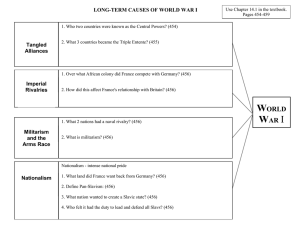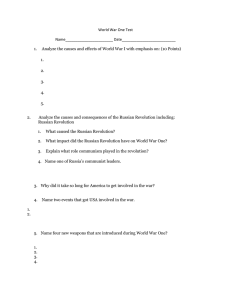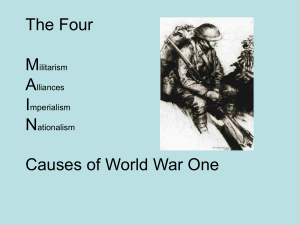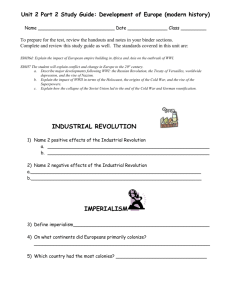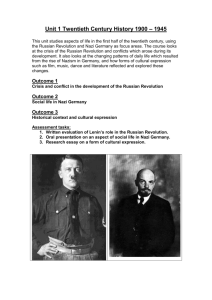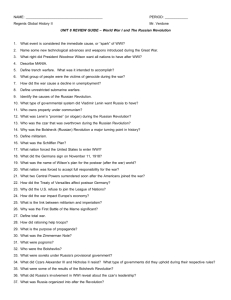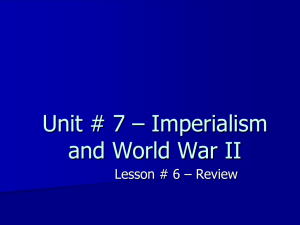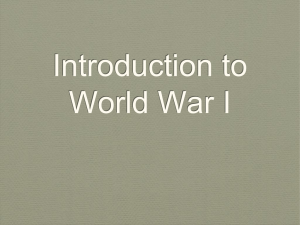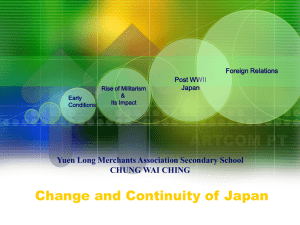Warm-Up 11/12/15
advertisement
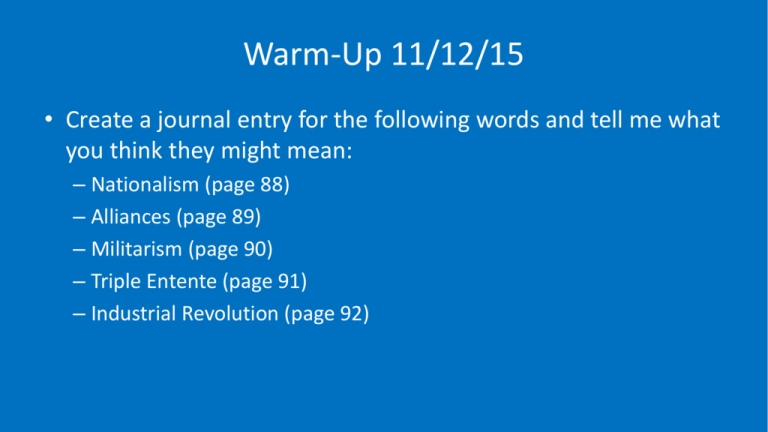
Warm-Up 11/12/15 • Create a journal entry for the following words and tell me what you think they might mean: – Nationalism (page 88) – Alliances (page 89) – Militarism (page 90) – Triple Entente (page 91) – Industrial Revolution (page 92) Day’s Lesson Plans for SS6H7a: SS6H7 The student will explain conflict and change in Europe to the 21st century. a. Describe major developments following World War I: the Russian Revolution, the Treaty of Versailles, worldwide depression, and the rise of Nazism Day 1 Industrial Revolution Explained in Video form https://www.youtube.com/watch?v=d4joqYycnq M (20 min) **Watch this video at home! https://www.youtube.com/watch?v=3Efq-aNBkvc (4 min) Day 1-2 Essential Question: How did World War I (WWI) change Europe and the world? (SS6H7a) Standard: SS6H7a Describe major developments following World War I: the Russian Revolution, the Treaty of Versailles, worldwide depression, and the rise of Nazism Causes of World War "The Great War was without precedent ... never had so many nations taken up arms at a single time. Never had the battlefield been so vast…never had the fighting been so gruesome..." Causes of World War I (Take notes on graphic organizer) • Militarism – building up armed forces, getting ready for war • Alliances – agreements or promises to defend and help another country • Imperialism – trying to build up an empire (powerful country that controls several less powerful countries • Nationalism – having pride in your country, willing to defend it Militarism • There was fierce competition over land in Europe • Armies and navies were greatly expanded. The standing armies of France and Germany doubled in size between 1870 and 1914. • Naval expansion was also extremely competitive, particularly between Germany and Great Britain. • Russia wanted to expand its land and gain access to warm water ports. These ports would give the Russian navy the Mediterranean Sea • Germany began a military buildup and increased its navy
